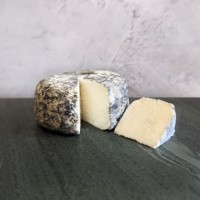
Seasonality in food is one of those buzzwords that often pops up on menus and cookery programmes. When it comes to the likes of asparagus or strawberries, it's pretty easy to divine when the produce is at its peak and when the less-than-delicious offering is likely to have been shipped halfway around the world.
So, when we talk about seasonality in cheese – what do we actually mean…? Like your fruit and veg, this is linked to a growing season and when cheeses are at their tastiest. Did you know that not all animals can breed all year round? As such, not all animals can be milked all year around. For example, goats and sheep tend to have their kids and lambs in the spring, hence why we have lamb at Easter. In larger, more industrial settings, farmers may manipulate these ‘seasons’ to ensure a year-round milk supply. For example, this can be done by keeping the animals inside 12 months of the year rather than letting them enjoy the bucolic English countryside. Smaller-scale, artisan producers tend to like working with the seasons and that’s why we like working with them. New season milk is particularly delicious, especially if the animals have been allowed to graze on pasture and all of that tender spring grass.
There’s also an element of eating the cheese that matches the weather. Burrata is delicious, but when it's raining outside and the heating is on full blast it's not my go-to. Equally, I have a low key Raclette addiction but even I would struggle on a scorching day in the middle of August (although, melted Ogleshield – a British raclette style – on a Burger fresh from the BBQ with cornichons is absolutely incredible). Therefore, whilst cows can generally be milked all year around, there are times of year when cheeses are simply more suited to one style over another. It's also worth bearing in mind when your big hard cheeses were made. When the grass in green and the wildflowers are at an abundance, the milk is bright and floral which in turn comes across in the cheese. Winter-made cheeses tend to have a paler paste and the animals have been eating less fresh grass. I love asking cheesemongers behind counters for the exact make date of the cheese – it can be a good indicator into what profile the cheese will have. And its one of the key tools I use as a cheese buyer. When we select our Cheddars, for instance with the likes of Jamie Montgomery or the Trethowan brothers, we like to look at when the cheese was made but also what age profile we want to sell the cheese at. Above all else, I think cheese needs to be delicious and seasonality plays a huge part in that!
What I am eating this month
Brightwell Ash – Spring cheeses for me are all about goat’s milks. The fresh milk, all vibrant and singing. It's enough to put a spring in your step. My current favourite in Brightwell Ash. It’s got an incredible mousse-like texture that I find quite addictive. Its sister cheese Sinodun Hill is also tasting fantastic and Golden Cross and Mothais sur Feuille have been really popular with the teams recently.
St James – Cheesemongers get giddy for cheeses that have limited seasons, and as we bid farewell to Mont D’Or, it means the first of the St James cheeses are on the horizon. Varying from sweet and milky to brothy and rich, the delight of this cheese is how it progresses through the season, meaning you get to try it again and again as the cheese evolves through the year.

Schnebelhorn – Whilst we are coming to the tail end of the colder months, where I would normally be heartily recommending your alpine styles for the depths of winter, Schnebelhorn is aged for 7-8 months, meaning the current batches will have been made in the height of summer 2023 where the animals will have been grazing on those luscious Swiss mountain grasses.
Barkham Blue – a long favourite cheese of mine, this indulgent blue cheese is made with milk from Guernsey cows – a breed renowned for its incredibly golden and rich milk. On the cheesemaker’s recent retirement, the recipe has been picked up by master cheesemakers Village Maid (of Waterloo and Wigmore fame). What makes this transfer of cheese so sweet is that the new and old makers are cousins and so the cheese is staying in the family and the region. Its great for those days when its still a bit chilly and you want a bit of treat!








